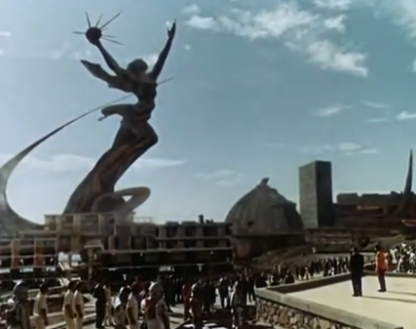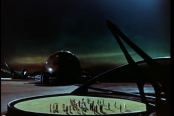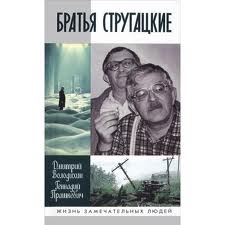A reminder from the organizers that the Far Rainbows one-day workshop on Russian and Eastern European science fiction cinema will take place at Wadham College, Oxford, this Friday 12 April. There will be a truly international line-up, including presenters from the USA, Germany, Estonia, and Sweden. Most but not all of the papers focus on adaptations for cinema of the Strugatskii brothers’ novels – ranging from Tarkovskii’s paradigm-changing Stalker to niche classics such as the German-language production of Hard to be a God (Es ist nicht leicht ein Gott zu sein, 1990) and the
short film Mechte navstrechu (Towards the Dream, 1963) by Ukrainian writer and scenarist Oles’ Berdnyk. (Ecven the conference title is derived from a 1963 novella by the Strugatskiis, Dalekaia raduga (Far Rainbow), which has not yet been filmed – to my knowledge. Our keynote speaker Professor Yvonne Howell (Richmond), a world authority on the Strugatskiis, will give a talk on new interpretations of Stalker. Please contact the organisers at farrainbows@gmail.com for more information. See below for a full programme of events.
FAR RAINBOWS: RUSSIAN AND SOVIET SCIENCE FICTION ON SCREEN
A film studies workshop focusing on the legacy of Arkadii and Boris Strugatskii
11-12 APRIL 2013, WADHAM COLLEGE, OXFORD
All workshop events except the film screening and lunch take place in the New Seminar Room, Wadham
PROGRAMME
11 April, 4pm
- Screening (in Russian) of The Dead Mountaineer Hotel (Otel “U Pogibshego Al’pinista”), dir. Grigorii Kromanov, 1979 (Room 3 of the Taylorian Institute, Oxford)
12 April
9am: Opening remarks
9.15am-10.45am SOVIET ALTERITIES: RUSSIAN AND NON-RUSSIAN SCI-FI FILM (CHAIR: ANDREI ROGATCHEVSKI)
- Lars Kristensen (Skövde, Sweden), Russians in Space: Ideological Problems for Red Sci-fi Cinema
- Tom Rowley (Cambridge), Adapting Oles’ Berdnyk: Cold War Analogy in the Early 1960s
- Maria Engström (Dalarna, Sweden), The Scent of a Former Life: The Czech Adaptation of the Strugatskiis’ story Malysh
10.45am: Coffee
11.15am-12.45pm NOT ONLY “STALKER”: Adaptations of Other Strugatskiis’ Novels (CHAIR: YVONNE HOWELL)
- Sofya Khagi (Michigan), Genre Film, Spectacle, and the Strugatskii Brothers in Fyodor Bondarchuk’s Inhabited Island
- Matthias Schwartz (Freie Universität Berlin), Visualising the Imperial Gaze: On Peter Fleischmann’s Es ist nicht leicht ein Gott zu sein
- Andrei Rogatchevski (Glasgow), Obscuring the Message: A Billion Years before the End of the World vs Days of Eclipse
1pm: Lunch in the Trapp Room, Wadham
2pm-3.30pm: STUDYING “THE DEAD MOUNTAINEER HOTEL”: APPROACHES TO SCI-FI NARRATIVE (CHAIR AND DISCUSSANT: MUIREANN MAGUIRE)
- Henriette Cederlöf (Södertörn, Sweden): Soviet Noir: Kromanov’s Dead Mountaineer Hotel)
- Eva Näripea (Estonian Academy of Arts) : Queering Gender in Dead Mountaineer Hotel: Intertextual Considerations of the Novel and the Film)
3.30pm: Coffee
4pm: KEYNOTE SPEECH BY PROFESSOR YVONNE HOWELL (RICHMOND)
What Are We Stalking? A Cognitive Approach to Tarkovskii’s Film Adaptation of the Strugatskiis’ Roadside Picnic
5pm: General discussion and concluding remarks
The workshop organisers are Muireann Maguire and Andrei Rogatchevski. Please contact them with any queries at farrainbows@gmail.com



